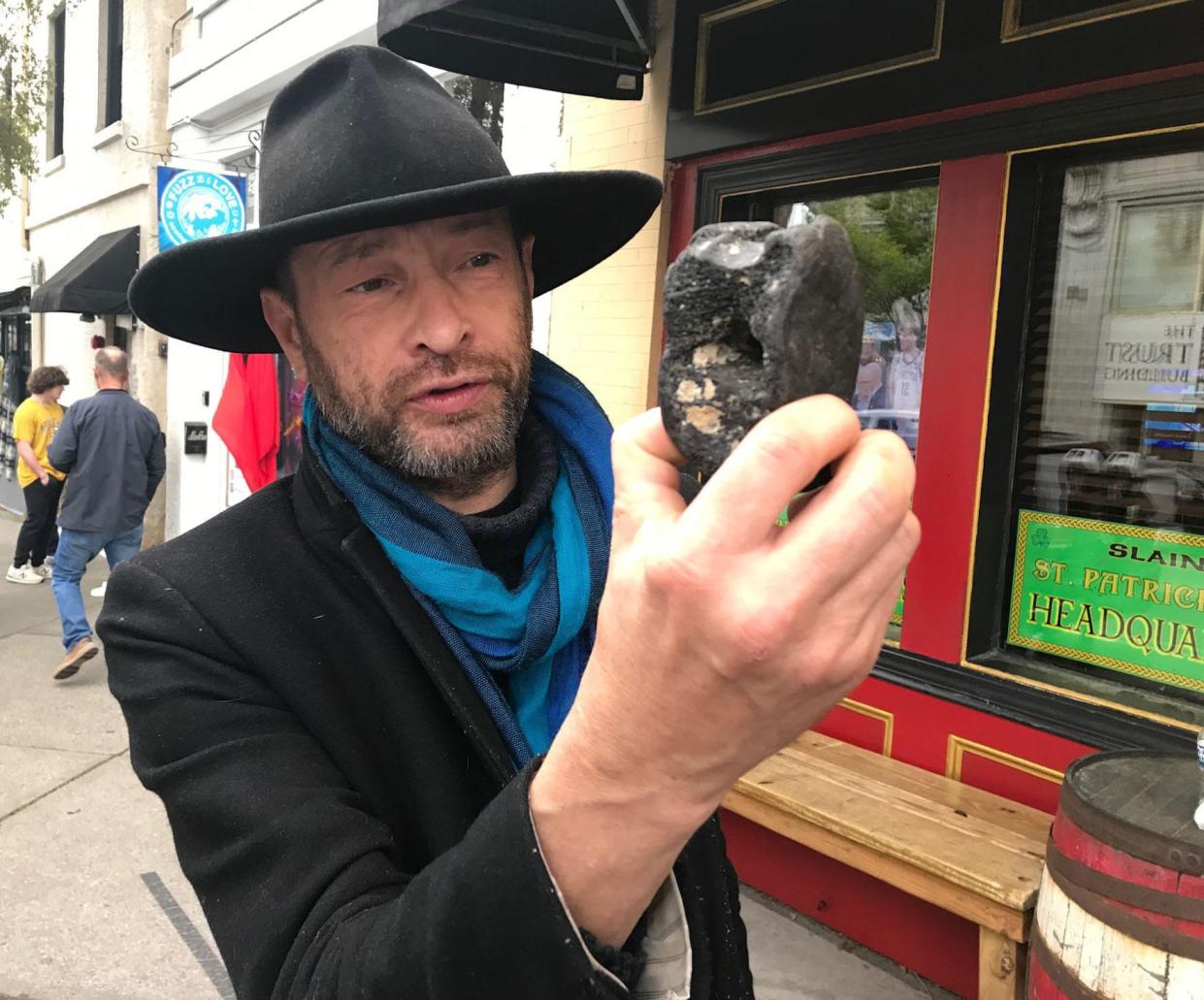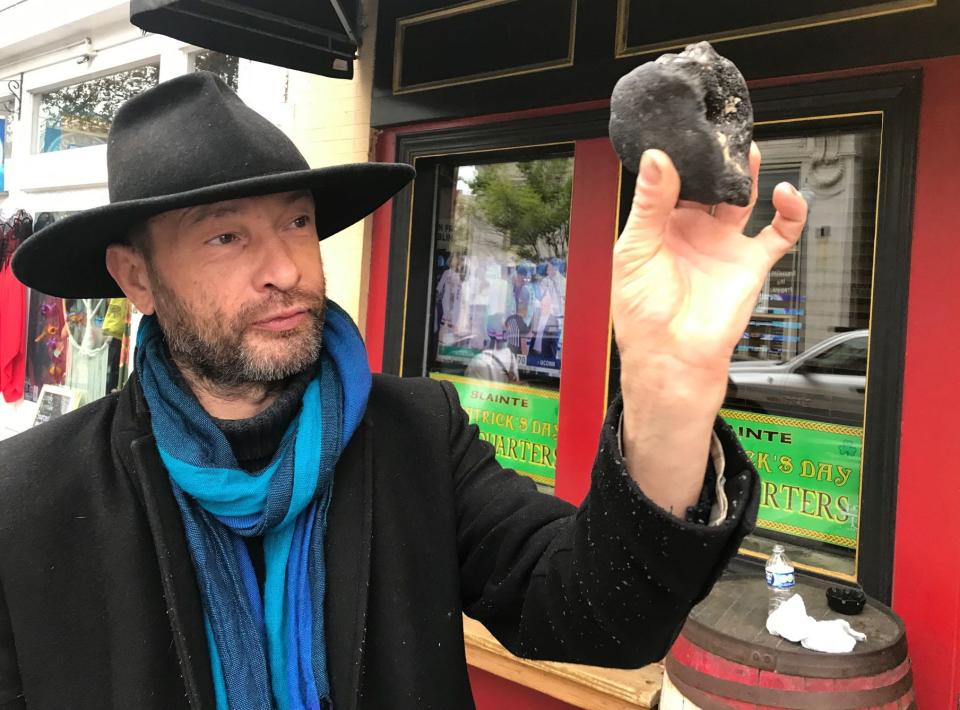A Jurassic bone? Downtown Wilmington bar owner's beach find could be millions of years old

Misha Sobol is well-known in downtown Wilmington as a co-owner of the lively, and cozy, Sláinte Irish pub on Front Street.
Sobol lives in an apartment above the bar, so not much work-life separation. To get away from it all for a couple of days last January, Sobol took a "staycation," as he called it, about 10 miles down the road at Wrightsville Beach.
The crowds were small and the hotel room was (relatively) cheap, but what happened while he was out walking the north end of Wrightsville one morning made the whole weekend even more worth it.
Gazing at the shells that had washed up during high tide, Sobol spied something that looked like a softball-sized black rock, a rarity on Wrightsville Beach.
"I picked it up and then I was like, 'What? This is not a stone,'" said Sobol, a native of Belarus who speaks with a Russian accent. Smooth and black with a hole through the middle of it, the object he picked up looked almost like the vertebra of some kind of sea creature, maybe a whale.
Once Sobol got back downtown, he took the find to his former geology teacher, longtime Cape Fear Community College instructor Phil Garwood, aka "Dr. Rocks."
Further testing would likely need to be done to positively identify the find, but there's little doubt, Garwood indicated, that it's really, really old.

Misha Sobol: If there's a mayor of downtown Wilmington, it might be this bar owner from Belarus
"This geologist believes that the most likely identification is that this comes from a Mosasaur or, as likely, Deinosuchus," Garwood wrote in a note to Sobol after taking a look at Sobol's beach specimen. "This is indeed a wonderful find."
A Mosasaur was a large, prehistoric aquatic reptile, while Deinosuchus, also extinct, was a much larger ancestor of modern-day alligators and crocodiles.
"The bone is obviously a humerus, patella, shoulder or most likely a spinal bone … of an ancient sea creature," Garwood said. "It is my estimate that the bone is from the Mesozoic Era and the late Jurassic or Cretaceous period, with the Cretaceous being the more likely."
In other words, the fossil that Sobol found could be as many as 150 million years old.
Sobol hasn't been shy about showing off his find, which has been held by many Sláinte patrons so far this year, and been in more than few selfies.
He's not 100 percent certain what he wants to have happen to the fossil, but Sobol said he'd like to see it used to educate people about the natural history of the Wilmington area.
"I want to keep it in Wilmington and put it on display," Sobol said, maybe for the students at CFCC. "I appreciate Cape Fear and Dr. Garwood."
This article originally appeared on Wilmington StarNews: Bar owner's Wrightsville Beach, NC find could be millions of years old

